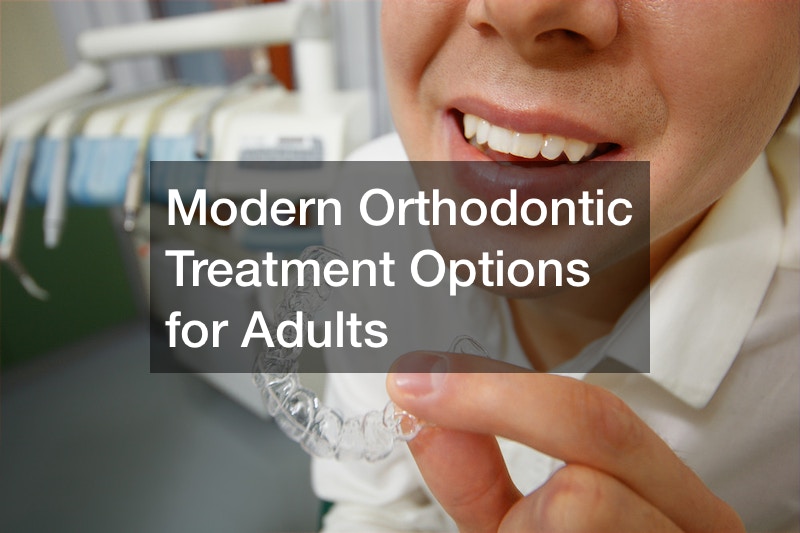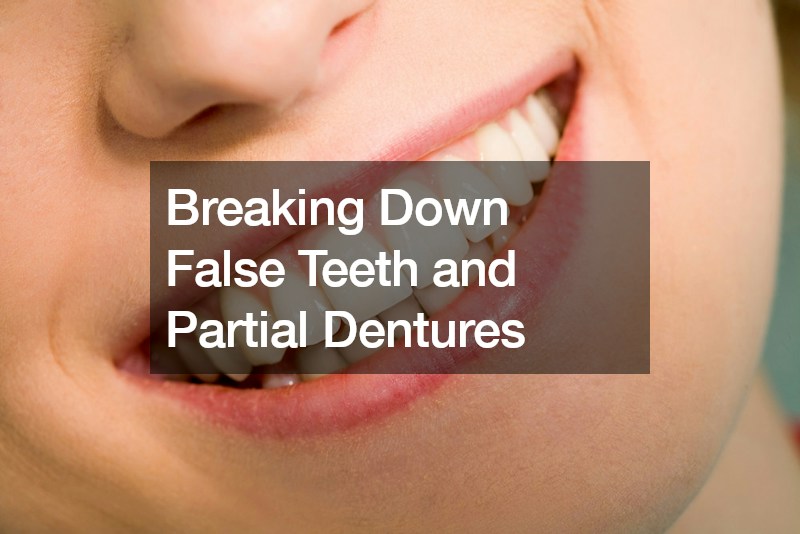How to Find an Adult Orthodontist
Orthodontists typically do not work in general dentists offices. Because of this, it might take some extra time to find orthodontic treatment options for adults. To find an orthodontist who works on adults, you can follow these steps:
- Ask for recommendations: Start by asking your friends, family members, or colleagues who have had orthodontic treatment as an adult. They can recommend a good orthodontist based on their personal experience.
- Search online: You can use search engines like Google to find orthodontists in your area. Look for orthodontists who specialize in adult orthodontics or have experience working with adults.
- Check the orthodontist’s credentials: Look for an orthodontist who is licensed and board-certified by the American Board of Orthodontics (ABO). This will ensure that the orthodontist has the necessary training and experience to provide quality care.
- Schedule a consultation: Once you have a list of potential orthodontists, schedule a consultation to meet with them in person. During the consultation, ask about their experience working with adults, the types of treatments they offer, and their approach to treatment.
- Consider the cost: Orthodontic treatment can be expensive, so it’s important to consider the cost before making a decision. Ask about the cost of treatment, whether they accept insurance, and what financing options are available.

Can Adults Avoid Traditional Braces?
Yes, adults can avoid traditional metal braces and opt for alternative orthodontic treatment options for adults. Here are some alternatives to traditional braces:
- Invisalign: Invisalign is a popular alternative to traditional braces that uses clear plastic aligners to gradually shift teeth into the desired position. The aligners are virtually invisible and can be removed for eating and brushing.
- Lingual braces: Lingual braces are similar to traditional braces, but they are placed on the back of the teeth instead of the front, making them virtually invisible from the outside.
- Clear ceramic braces: Clear ceramic braces are similar to traditional metal braces, but they use clear or tooth-colored brackets and wires that blend in with the teeth.
- Accelerated orthodontics: Accelerated orthodontics uses techniques such as Propel or AcceleDent to speed up the tooth movement process and reduce treatment time.
- Veneers or bonding: For minor orthodontic issues such as gaps or slightly crooked teeth, veneers or bonding may be an option. These cosmetic treatments can improve the appearance of teeth without the need for braces.
It’s important to consult with an orthodontist to determine the best treatment option for your individual needs and goals. They can help you weigh the pros and cons of each option and recommend the most effective treatment plan.
What to Expect From Your First Orthodontics Appointment
Your first orthodontics appointment is an important step towards achieving a healthier and more beautiful smile. Here’s what you can expect during your first appointment:
- Consultation: Your first appointment will begin with a consultation with the orthodontist at their orthodontic office. They will review your dental and medical history, ask about your concerns and goals, and perform a thorough examination of your teeth, gums, and jaws.
- X-rays and impressions: The orthodontist may take x-rays of your teeth and jaws to evaluate your tooth and jaw position and identify any underlying issues. They may also take impressions or digital scans of your teeth to create a personalized treatment plan.
- Treatment options: After evaluating your teeth and jaws, the orthodontist will discuss treatment options with you. They will explain the pros and cons of each option and recommend the most effective treatment plan based on your needs and goals.
- Cost and insurance: The orthodontist will provide an estimate of the cost of treatment and discuss payment options and insurance coverage.
- Next steps: If you decide to proceed with orthodontic treatment, the orthodontist will schedule your next appointment to start the treatment. If you need further evaluation or treatment by other dental specialists, the orthodontist will provide a referral.

How Orthodontic Checkups Generally Go
Orthodontic checkups are an essential part of orthodontic treatment. They allow the orthodontist to monitor your progress, make adjustments to your treatment plan, and ensure that your teeth are moving as planned. Here’s what you can expect during an orthodontic checkup:
- Examination: The orthodontist will perform thorough orthodontic exams of your teeth, gums, and jaws to evaluate your progress and check for any issues. They may take x-rays or impressions to get a closer look at your teeth and make any necessary adjustments to your treatment plan.
- Adjustment of braces or aligners: If you have braces, the orthodontist may adjust the wires or brackets to ensure that your teeth are moving as planned. If you have aligners, the orthodontist will give you a new set of aligners and check to make sure they fit properly.
- Oral hygiene: The orthodontist will evaluate your oral hygiene and give you tips on how to maintain good oral health during your treatment. They may recommend special tools or techniques to help you clean your teeth and braces effectively.
- Progress report: The orthodontist will give you a progress report on your treatment and let you know how much longer you will need to wear braces or aligners.
Can You Get Tooth Whitening While Undergoing Orthodontic Treatment?
In general, it is not recommended to undergo teeth whitening treatments while wearing braces or other orthodontic appliances. Here’s why:
- Uneven whitening: The brackets and wires of braces can create areas of shadow and make it difficult to whiten teeth evenly. This can result in some teeth appearing whiter than others, which can be noticeable and unattractive.
- Sensitivity: Teeth can become more sensitive during orthodontic treatment due to the pressure on the teeth and movement of the roots. Whitening treatments can exacerbate this sensitivity and cause discomfort or pain.
- Damage to braces: Teeth whitening products can damage or discolor the brackets and wires of braces, which can compromise the effectiveness of the treatment.
- Delay in treatment: Teeth whitening treatments can cause a delay in orthodontic treatment because they require several appointments and can interfere with the timing of adjustments and wire changes.
While teeth whitening treatments aren’t necessarily recommended during orthodontic treatment, other forms of cosmetic dentistry might be an option. For example, if there is a bad stain on one of your teeth that can be removed around the braces.

Do Adult Orthodontics Get in the Way of Other Dental Services?
Orthodontic treatment can affect the timing and delivery of other dental services. Here are some examples:
- Cleanings: Regular dental cleanings are important for maintaining good oral health, but they can be challenging to perform when wearing braces. The orthodontist may recommend more frequent cleanings during orthodontic treatment to prevent the buildup of plaque and tartar around the brackets and wires.
- Fillings and other restorative work: If you need fillings or other restorative work during orthodontic treatment, your orthodontist and dentist will need to coordinate the timing of the procedures. It may be necessary to remove the orthodontic appliance temporarily to perform the work, which can add time and cost to your treatment.
- Extractions: If you need teeth extracted during orthodontic treatment, the orthodontist and dentist will need to coordinate the timing of the extractions and the placement of the orthodontic appliance. It may be necessary to delay the placement of the appliance until after the extractions have healed.
- Implants: If you need dental implants during or after orthodontic treatment, the orthodontist and dentist will need to coordinate the timing of the procedures to ensure the best outcome. It may be necessary to wait until after orthodontic treatment is complete to place the implant.
What You Should Know About Clear Aligners
Clear aligners are an orthodontic treatment option that can help straighten teeth and correct bite issues. Here’s what you should know about clear aligners:
- Appearance: Clear aligners are made of a transparent plastic material that makes them nearly invisible. This is a popular option for people who prefer a more discreet orthodontic treatment.
- Comfort: Clear aligners are custom-made to fit your teeth and are smooth and comfortable to wear. Unlike traditional braces, they don’t have wires or brackets that can irritate your mouth or cause discomfort.
- Removability: Clear aligners can be removed for eating, drinking, brushing, and flossing. This makes it easier to maintain good oral hygiene and enjoy your favorite foods during treatment.
- Treatment time: The length of treatment with clear aligners depends on the severity of your orthodontic issues. On average, treatment with clear aligners takes about 12-18 months.
- Compliance: Clear aligners require strict compliance with wearing them for at least 22 hours a day, and changing aligners on schedule as prescribed by your orthodontist. It is important to follow the prescribed treatment plan carefully to achieve the best results.
- Maintenance: Clear aligners need to be cleaned regularly to prevent the buildup of bacteria or staining. Special solutions or tablets can be used to keep aligners clean and fresh.
- Cost: Clear aligners can be more expensive than traditional braces, depending on the complexity of the case, the brand of the aligners, and the location. However, some insurance plans may cover a portion of the cost of clear aligners.

Are There Other Invisible Orthodontics?
Several types of invisible orthodontics can help correct crooked teeth and bite issues. Here are some of the most popular types:
- Lingual braces: Lingual braces are invisible braces that are attached to the back of the teeth, making them invisible from the front. Lingual braces work like traditional braces, but they are hidden from view.
- Ceramic braces: Ceramic braces are similar to traditional metal braces, but the brackets are made of a tooth-colored ceramic material that blends in with the teeth. This makes them less noticeable than traditional metal braces.
- Self-ligating braces: Self-ligating braces are similar to traditional metal braces, but they use a specialized clip instead of elastic bands to hold the wire in place. This makes them less noticeable and more comfortable than traditional braces.
- Clear retainers: Clear retainers are similar to clear aligners, but they are used to maintain the position of the teeth after orthodontic treatment is complete. They are custom-made for each patient and are nearly invisible.
How to Care for Your Teeth While Wearing Braces
Caring for your teeth while wearing braces requires a little extra effort, but it is important to maintain good oral hygiene and dental care during orthodontic treatment to prevent tooth decay, gum disease, and other dental problems. Here are some tips for caring for your teeth while wearing braces:
- Brush regularly: Brush your teeth at least twice a day, using a soft-bristled toothbrush and fluoride toothpaste. Pay special attention to brushing around the brackets and wires, using circular motions to remove any food particles or plaque that may have accumulated. Tooth cleaning is crucial.
- Floss daily: Flossing is essential for removing plaque and food particles from between your teeth and under the wires. Use a floss threader or interdental brush to make flossing easier while wearing braces.
- Use mouthwash: Rinsing with an antimicrobial mouthwash can help kill bacteria and freshen your breath. Choose an alcohol-free mouthwash to avoid drying out your mouth.
- Avoid hard, sticky, and sugary foods: These types of foods can damage the wires and brackets or get stuck in your braces, making it harder to clean your teeth. Stick to soft foods, and avoid hard candies, gum, and other sugary snacks.
- Visit your dentist regularly: Regular dental checkups and cleanings are important during orthodontic treatment to monitor your oral health and ensure that your teeth and gums are healthy.
Taking good care of your teeth while wearing braces can help prevent dental problems and ensure that your orthodontic treatment is effective. Don’t hesitate to ask your orthodontist for advice on oral hygiene during your treatment.



